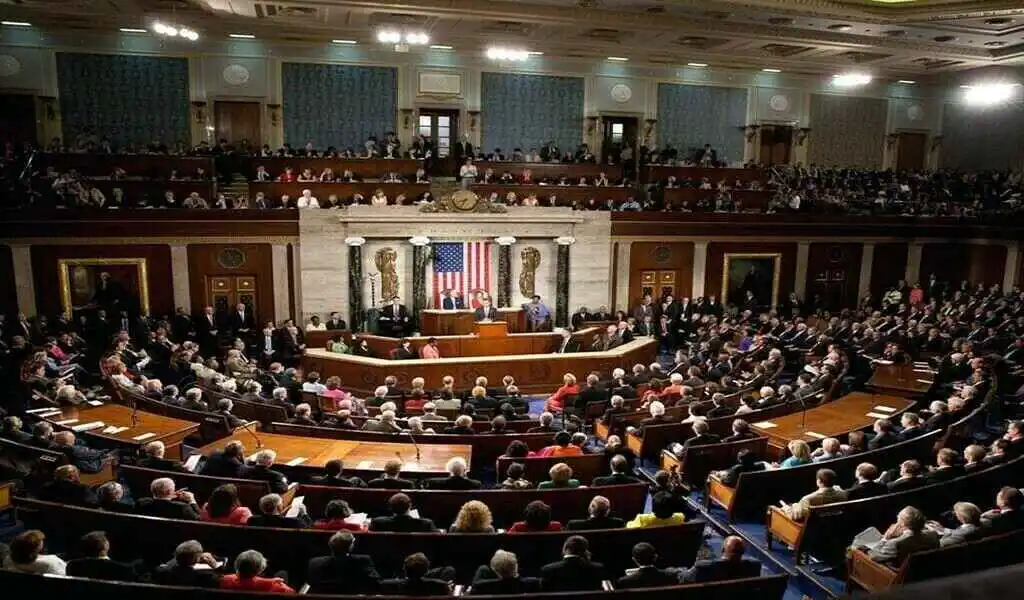News
Phones, Islamic Books And Currency Exchange. Some Businesses Are Making Money Out Of Taliban Rule

KABUL, Afghanistan Taliban – Yunis Safi, a Kabul businessman, understands how important it is to show off your phone if you want something done.
“In Afghanistan, your phone is your personality,” he remarked, beaming, his hands adorned with jewel-encrusted rings. One has an emerald, the other a large Russian diamond. “When you go to a meeting with the government, the better your phone, the more they respect you.”
Safi owns a phone business in the exclusive Shar-e-Naw area. An armed guard stands outside. The iPhone 15 Pro Max is now on store shelves, priced at $1,400. He has customers willing to part with this amount of money, which may surprise some, considering the country’s economic troubles and that more than half of the population relies on humanitarian help for survival.
Afghanistan’s finances were precarious even before the Taliban took power in 2021. The budget relied significantly on foreign help, and corruption was rampant. The seizure shattered Afghanistan’s economy, freezing billions of dollars in international finances and forcing tens of thousands of highly skilled Afghans to flee the country with their money.
AP – VOR News Image
Phones, Islamic Books And Currency Exchange. Some Businesses Are Making Money Out Of Taliban Rule
Despite the terrible conditions, some businesses benefit under the Taliban administration. Women are relegated to customers, however, because authorities have forbidden them from most jobs, including retail. None of Safi’s 78 employees are female.
He has tapped into a varied client base, including those eager for the latest iPhone release and those who prefer simple devices. The latter account for the majority of his sales and range in price from $20 to $200.
The Taliban used to target phone towers and threaten telecom companies, accusing them of working with the United States and other international forces to detect insurgent movements via mobile phone signals. Now, they’re investing in 4G mobile networks.
The Communications Ministry reports that 2 million new SIM cards have been issued in the last two years, and subscriber numbers are increasing. Enayatullah Alokozai, a ministry official, stated that the government is investing $100 million in telecom and has completely rebuilt hundreds of towers.
There are 22.7 million active SIM cards in a country with a population of 41 million. Ten million are for phone calls, with the remainder for mobile internet.
According to Trade Ministry estimates, phone imports have increased. More than 1,584 tons of phones entered Afghanistan in 2022. Last year, it weighed 1,895 tons.
Safi said he had many Taliban customers, and the younger ones prefer iPhones. “Of course, they need smartphones. They use social media and enjoy making videos. The iPhone offers stronger security than Samsung. The camera’s resolution, CPU, and memory are all improved. Afghans use smartphones like everyone else.”
Safi has the iPhone 15 Pro Max, an Apple Watch Ultra, and three automobiles.
Business was difficult shortly after the Taliban took power, but it is improving, according to Safi. “The people buying the new release iPhones are the ones with relatives abroad sending money to Afghanistan.”
AP – VOR News Image
Phones, Islamic Books And Currency Exchange. Some Businesses Are Making Money Out Of Taliban Rule
Remittances are a lifeline, but less than half of what they were before the Taliban took power and the financial system collapsed.
At Kabul’s rowdy Shahzada Market, hundreds of money changers clutch stacks of the local currency, the Afghani, and noisily hawk their wares. They occupy every floor, stairwell, corner, and cranny.
According to Abdul Rahman Zirak, a senior official at the money exchange market, $10 million changes hands every day. The diaspora sends largely U.S. cash to family, which they convert for Afghani.
Before the Taliban took control, there were more ways to donate money to Afghanistan. However, there are no longer any linkages to SWIFT or international banking, which is one of the main reasons why business is brisk in the market, he said.
“The work of money exchangers has increased and strengthened,” he stated. “Money transfers come from Canada, the U.S., Europe, Australia, Arab nations and other neighboring countries.”
Trade becomes extremely chaotic during the holidays. During the holy month of Ramadan, 20,000 people visited the market daily, and it took more than 90 minutes to enter, he claimed.
Our business may suffer if the restrictions are lifted and the assets are unfrozen. But I don’t see this happening. Many do not have bank accounts. Unemployment is rising, therefore people send money to Afghanistan. Our company will be needed for years to come.”
Irfanullah Arif, who owns Haqqani Books, a specialist retailer of Islamic manuscripts, is likewise pleased with his fortunes. His consumers are primarily religious school professors and pupils.
There are at least 20,000 madrasas in Afghanistan. The Taliban intends to build more. Last year, the supreme commander allegedly directed the recruiting of 100,000 madrassa teachers.
AP – VOR News Image
Phones, Islamic Books And Currency Exchange. Some Businesses Are Making Money Out Of Taliban Rule
While Arif’s business suffered, along with everyone else’s, from the chaos that followed the takeover, there was another cause. “All the students left the madrassas and went to work for the (Taliban) government,” Arif claimed.
Success, however, comes with a price. Arif imports everything, and the Taliban are just concerned with collecting revenue, even from Islamic literature.
Arif pays a tax of 170 Afghanis ($2.36) for a carton of 100 books, with a shipping cost of 500 Afghanis ($6.95). His bookstore’s taxes have increased under the Taliban administration.
“That’s why books are expensive in Afghanistan,” he sighed. “With the increase of madrassas, our trade has gone up, but so have the taxes.”
SOURCE – (AP)
News
Cases Of The US Flu Season Are Rising, While Vaccinations Are Behind Schedule.

(VOR News) – The U.S. flu season has begun, according to health experts, who also noted a sharp rise in cases countrywide on Friday.
Significant increases were noted by the Centres for Disease Control and Prevention in a number of indicators, such as laboratory tests and ED visits. “For the past few weeks, it has been increasing steadily.” “Yes, we are in flu season right now,” CDC’s Alicia Budd said.
Last week, flu-like sickness was reported at elevated or very elevated levels in 13 states, roughly twice as many as the week before. Dr. William Schaffner, an infectious disease specialist at Vanderbilt University, says Tennessee is seeing a spike in sickness in the Nashville area.
Schaffner said, “Influenza cases have been increasing, but they have increased significantly in the last week.” He noted that up to 25% of patients in a nearby clinic, which is a gauge of illness trends, have flu-like symptoms.
An early focal point was Louisiana.
Our Lady of the Lake Regional Medical Centre, the largest private hospital in the state, in Baton Rouge, has infectious diseases specialist Dr. Catherine O’Neal, who said, “This week is a significant turning point as individuals are affected by the flu.” “Parents frequently say, ‘I have the flu and can’t go to work,’ and ‘Where can I get a flu test?'”
Fever, cough, sore throat, and other influenza-like symptoms are caused by a variety of viruses. COVID-19 is one of them. Another flu season common disease that causes cold-like symptoms but poses serious hazards to infants and the elderly is respiratory syncytial virus (RSV).
Recent CDC numbers indicate a decline in COVID-19 hospitalisations since the summer. According to CDC wastewater data, COVID-19 activity is modest nationwide but elevated in the Midwest.
Although RSV hospitalisations are still marginally more common than flu admissions, they started to rise before flu season cases and currently show signs of perhaps stabilising. RSV activity is low nationwide, but wastewater data shows that it is high in the South.
Based on a number of indicators, such as laboratory results from hospitalised patients and outpatient clinics, as well as the percentage of ED visits that resulted in an influenza diagnosis at discharge, the CDC declared the start of the flu season.
According to Budd, it is too early in the season to determine the effectiveness of the influenza vaccine, and no type of virus seems to be more common.
The flu season last winter was classified as “moderate” overall, but it continued for 21 weeks, and the CDC estimates that 28,000 people died from the virus. With 205 paediatric deaths reported, the situation was particularly dangerous for kids. It was the largest number ever recorded for a conventional influenza season.
The prolonged flu season was probably one of the reasons, Budd added.
The lack of influenza vaccinations was one of the contributing factors. The CDC reports that 80% of children who passed away and had verified vaccination status and were of the right age for flu shots were not completely immunised.
Children’s immunisation rates are drastically lower this year. About 41% of people had a flu shot as of December 7, which is similar to the percentage at the same time last year. For youngsters, the figure is steady, although it is lower than in the previous year, when 44% received an influenza vaccination, according to CDC data.
About 21% of adults and 11% of children are fully vaccinated against COVID-19, which is still a poor vaccination rate.
Influenza experts advise everyone to get vaccinated, especially as people get ready for holiday gatherings where respiratory diseases could spread widely.
“This virus also has the potential to spread from person to person at all those happy, pleasant, and heartwarming events,” Schaffner said. “flu season Vaccination remains a viable option.”
However, Louisiana’s health department announced on Friday that it was rescinding its COVID-19 and flu vaccination recommendations. According to an official, the department’s current position is that people should speak with their doctors about whether the immunisations are suitable for their situation.
The department’s spokesperson, Emma Herrock, did not respond to follow-up questions regarding the policy. Dr. Ralph Abraham, the state’s surgeon general, has expressed concerns in the past regarding the COVID-19 vaccine’s effectiveness and safety.
SOURCE: AP
SEE ALSO:
Social Security Change Approved By Senate Despite Fiscal Concerns
King Charles Could Millions Annually from Renting His Properties
News
Social Security Change Approved By Senate Despite Fiscal Concerns

(VOR News) – On Saturday, the U.S. Congress passed a plan to increase Social Security retirement payouts for some retirees who receive public pensions, a move that critics say will further erode the program’s financial stability. Among these pensioners are former firefighters and police officers.
The Social Security Fairness Act was passed by the Senate on a bipartisan vote of 76-20 just after midnight. The act may lower payments for those receiving pensions and aims to repeal provisions that have existed for 20 years.
The House of Representatives passed the bill last month by a vote of 327-75, meaning that if the Senate also approves it, it would be delivered to Democratic President Joe Biden to become law.
The White House dodged enquiries regarding Social Security’s objectives.
In order to limit government benefits for certain higher-paid employees who are also getting pensions, the measure will reverse a long-standing change to the program. It has become increasingly common in recent years for municipal employees, such as postal workers and firefighters, to face pay limitations.
The vast majority of Americans do not take part in pension plans that provide a fixed return on investment, instead relying on their own savings and Social Security. According to data from the Department of Labour, only 10% of private sector employees in the US are covered by pension plans.
The new rules apply to about 3 percent of Social Security users, or more than 2.5 million people in the United States. Legislators are heavily influenced by the workers and retirees impacted by these rules, and the powerful advocacy organisations that speak for them have been using the legislative process to push for a legislative cure.
According to retirement experts, some retirees may be able to earn hundreds of dollars more in government benefits each month as a result of the move.
According to a Congressional Budget Office analysis, the bill is expected to cost approximately $196 billion over the next 10 years. As a result, federal budget experts are worried that the change could negatively affect the program’s already fragile financial status.
In an interview with the Bipartisan Policy Centre, Emerson Sprick, associate director of economic policy, said he was frustrated by “the overwhelming support in Congress for the contrary of what policy researchers concur on is quite frustrating.”
Instead of eliminating current formulas, we could improve them.
Among these changes is the Social Security Administration’s increased disclosure of the anticipated monetary benefits for these public sector workers.
The Committee for a Responsible Federal Budget, a nonpartisan fiscal think tank, has voiced concerns that the additional cost will impact the program’s ability to continue.
Maya MacGuineas, the organization’s leader, made the declaration, saying, “We are hastening towards our own fiscal ruin.”
“It is noteworthy that lawmakers are in a position to shorten the timeframe by six months, as there are just nine years left before the trust fund for the biggest program in the country runs out.”
Senator Ted Cruz, a Republican, said on the Senate floor on Wednesday that the bill in its current form would “throw granny over the cliff.”
According to what he stated, “every senator who votes to impose a burden of $200 billion on the Social Security Trust Fund is opting to put the interests of senior citizens who have contributed to Social Security and earned those benefits in jeopardy.”
Those who favoured the legislation said that the question of what would happen to Social Security could be settled later.
“Those are significantly longer-term concerns that we must collaboratively address,” a supporter of the idea Senator Michael Bennett told Reuters when asked if the move would affect the government’s capacity to be viable.
SOURCE: BR
SEE ALSO:
King Charles Could Millions Annually from Renting His Properties
Man Creates Candy Cane Car to Spread Christmas Cheer
News
King Charles Could Millions Annually from Renting His Properties

A recent analysis suggests that King Charles might earn over £1 million each year by renting out royal properties to holidaymakers.
The Royal Family’s historic houses and mansions are popular holiday rentals, contributing significantly to the Palace’s revenue.
Pikl Insurance estimates that the royals may earn up to £118,775.85 per month, or around £1,425,310.20 per year, from their holiday rental portfolio. Even after accounting for cancellations, the monarchy is anticipated to generate a net annual income of somewhat more over £1.4 million.
Estimated Annual Rental Income of £1.4 Million
The four primary royal properties accepting public bookings are Balmoral Castle, Castle of Mey’s Captain House, Restormel Manor, and Dumfries House, according to Express.co.uk. Cottages at Balmoral Castle in Scotland are expected to generate £36,798.30 per month after accounting for cancellations.
According to the numbers, the 500-year-old Restormel Manor in Cornwall is the most profitable of them all, earning a solid £47,082 every month. The resort, located in the Fowey Valley, has four booking spaces and six converted barns.
Dumfries House in Ayrshire, Scotland, adds an estimated £31,185.63 and offers 25 rooms for booking. The Castle of Mey’s Captain House in the Scottish Highlands is estimated to generate a more modest £3,709.92 per month, despite the fact that the entire property is available for booking.
The analysts stated, “While the Royal Family’s primary role is undoubtedly to serve the nation, it is clear that their properties are also a valuable asset.” These estimates highlight the royal estate’s considerable financial potential and provide an intriguing peek into the monarchy’s corporate operations.”
Royal Family received £86.3 million from the taxpayer-funded Sovereign Grant in the previous fiscal year, according to official numbers released in July.
All revenues from the Crown Estate, which includes royal households, forestry, agriculture, and offshore wind, are paid directly to the Treasury, with a portion of this money, now 12%, returned to the Royal Family to finance their tasks.
The records also cover a period of jubilation, including the coronation and festivities surrounding the King and Queen’s crowning in May of last year.
-
Politics4 weeks ago
Miller Expects 4.9 Million Foreigners to Leave Canada Voluntarily
-
News3 weeks ago
Nolinor Boeing 737 Crash Lands in Montreal
-
News2 weeks ago
“Shocking Video” Vancouver Police Shoot Armed Suspect 10 Times
-
Tech4 weeks ago
Increasing its Stake in OpenAI by $1.5 Billion is a Possibility for SoftBank.
-
News4 weeks ago
Facebook Securities Fraud Case Dropped
-
Health4 weeks ago
A Canadian Teenager’s Bird Flu Virus Has Mutations





























